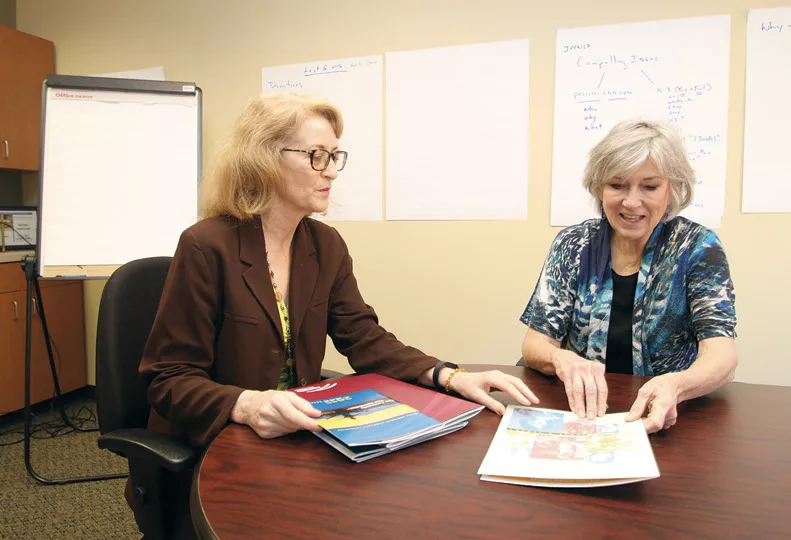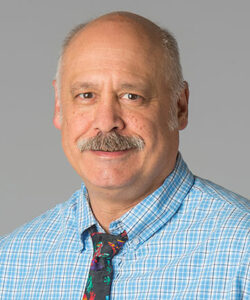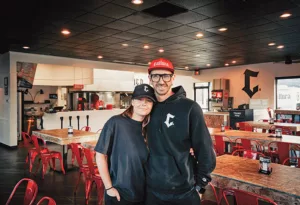
Home » Networking group shares planned-giving concepts
Networking group shares planned-giving concepts
Estate planners, fundraisers look to council as resource

March 10, 2016
Leaving a legacy to a charity can be a complex endeavor best accomplished through planned-giving strategies formed jointly by the donor, financial professionals, and fundraisers, says Kjirstin Graham, president of the Inland Northwest Planned Giving Council.
Graham, an attorney in the Spokane office of Seattle-based Foster Pepper PLLC, has been involved with the Inland Northwest Planned Giving Council for about four years, having been referred to it by a colleague.
Her practice focuses on estate planning, which includes advising clients on planned-giving strategies.
Planned giving goes beyond writing a check or giving cash, and requires someone with expertise, Graham says.
She says INPGC’s educational programs and networking opportunities have fostered connections and increased awareness of benefits of charitable giving among members here.
“It really helps foster charitable giving in the community,” she says.
The organization currently has 38 members who represent various nonprofits or are allied professionals in Washington and Idaho.
Allied professionals include attorneys, accountants, financial advisers, insurance professionals, and trust officers, Graham says.
“We’re a resource and networking opportunity for folks engaged from a professional perspective in planned giving,” she says.
Planned-giving strategies can be complex, depending on the client’s personal tax and financial situation, their intent, and their assets, she says.
“If somebody is looking to the INPGC who needs a reference or referral, we can certainly refer them to an appropriate professional.”
A planned gift also can be simpler for people who have an interest in a particular nonprofit, Graham says.
Most established nonprofits have someone in charge of planned giving who can answer questions, she says.
Carol Neupert and Jan Orr founded the chapter here in 1994.
At the time, Neupert worked for Sacred Heart Medical Center, and Orr worked for Gonzaga University.
Neupert says, “There really wasn’t good training opportunities in planned giving for people locally. You had to go to the west side of the state or around the country for different seminars. Both Jan and I trained at a national level because of our affiliation with national boards.”
At the time, Neupert, says, planned giving was a new concept to many West Coast nonprofits, although it was well established in other parts of the country.
“Educational institutions were far ahead of health care and other fundraisers in the philanthropy world,” she asserts. “It was pretty much misunderstood early on in the game.”
Neupert and Orr brought information from the Indianapolis-based national council, which now is named Partnership for Philanthropic Planning, and they put together the basis for a local network for fundraising and estate planning professionals.
INPGC is a chapter of the national Partnership for Philanthropic Planning. Another chapter, Washington Planned Giving Council, is based in Seattle, and several other chapters are located throughout the U.S., she says.
The council doesn’t have a designated office. It holds regular meeting every other month in the Northwest Museum of Arts & Culture, at 2316 W. First.
Graham says the council’s influence can’t be quantified in dollar value, because planned gifts don’t pass between clients and organizations directly through the council, and the council doesn’t seek donors.
“It’s much more intangible,” she says. “Each professional or nonprofit is dealing with its own clients and donors.”
While the council doesn’t function as a foundation or endowment, representatives of such entities are members, including P.J. Watters, director of gift planning for the Spokane-based Inland Northwest Community Foundation.
Watters says she has been involved with the council in her work for three nonprofits throughout her career.
“Initially, when I started working with a health care-related foundation, I knew I needed to make connections with professionals in the field,” she says.
In her current position, the Inland Northwest Community Foundation manages a lot of endowments from estates, she adds.
“Estate gifts require a lot more thought and planning than writing a check or even transferring stocks and securities,” Watters says. “That’s not the type of gift that donors can put together themselves. They need legal counsel and tax advice.”
Watters says she can’t give tax advice or legal advice, “but I work with a lot of tax advisers and attorneys, and I can tell stories.”
She asserts, however, that she can be a starting point for people who want to know what kind of questions they need to ask counsel and professional advisers.
“Because I don’t give advice, I’m free,” Watters says.
Gift planning can be beneficial for the donor’s estates and heirs as well as for the charities they want to support.
Planned gifts range from bequests through wills, to more complicated charitable trusts that move assets so that they get some tax benefit or even income.
“Sometimes donors can leave more money for their heirs if they plan well,” Watters asserts.
Leaving retirement funds to heirs, for example, can be taxable, but if such assets were to be put into a charitable trust, it could result in less of a tax burden, she contends.
Planned giving strategies aren’t just for gifts of cash or securities.
Watters says she recently was on a panel set up through the council to discuss “oddball gifts,” such as real estate or other nonliquid assets.
One example that was brought up by an attorney was called a flip NIMCRUT (net income with makeup charitable remainder unitrust), which is an intricate arrangement that provides the donors of high-value assets, their heirs, and recipient charities with income stability and tax liability protection in uncertain economic times.
“It’s a perfect solution to the challenging issue of highly appreciated real estate being gifted in a down market,” she says. “It’s an example of when we get peers and professionals together and get the great nerdy talk going on, and everybody wins.”
Pat Moseley, retired executive director of the Inland Northwest chapter of the American Red Cross, during a break in a visit with Watters to discuss her own estate planning, said planned giving is critical to nonprofits.
“They wouldn’t be able to do all of the work they do without it,” Moseley says.
Watters adds that planned gifts contribute to the sustainability of organizations like the Inland Northwest Community Foundation.
“They turn on the lights and make the payroll,” she says.
Special Report
Related Articles




_web.webp?t=1764835652)